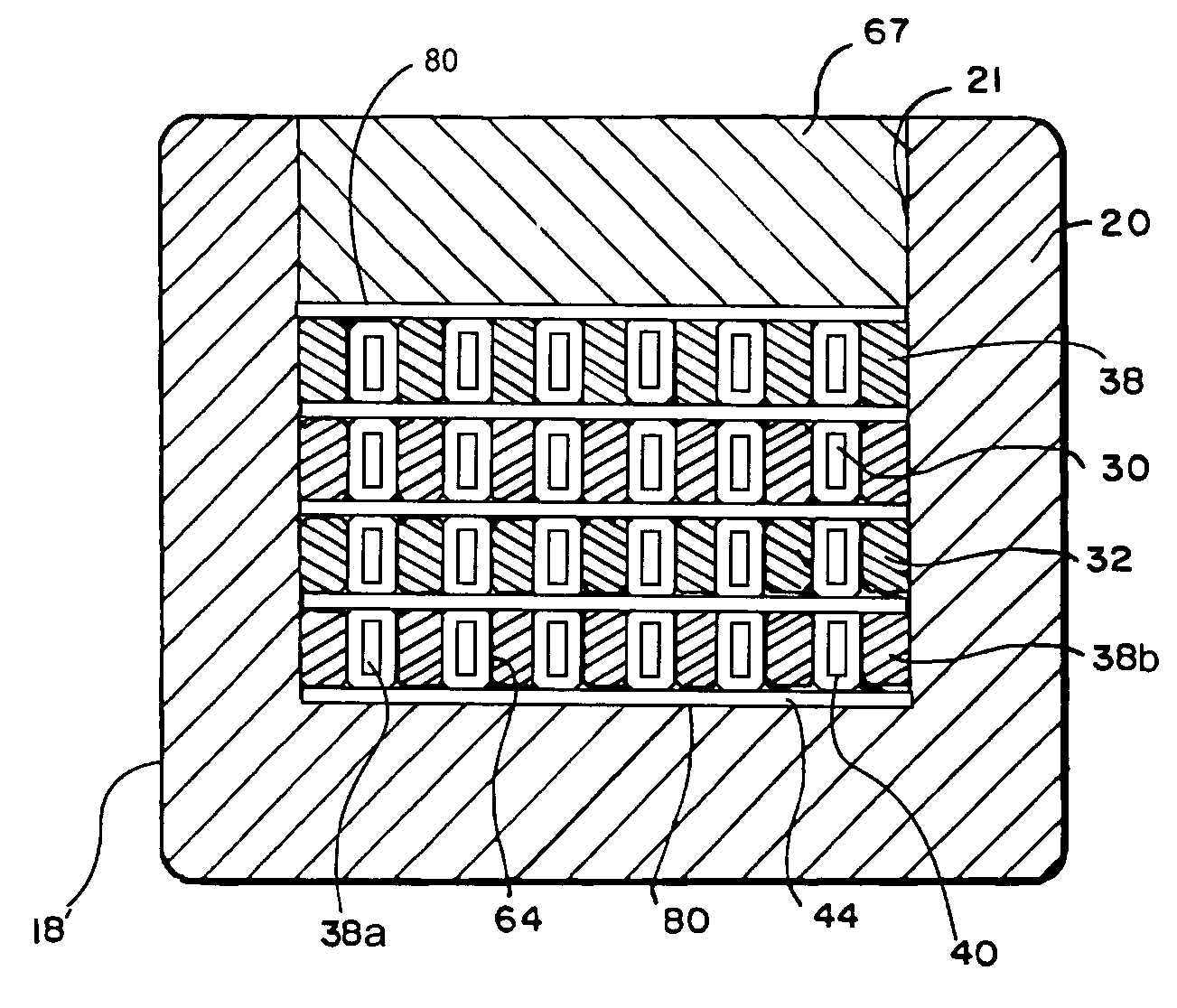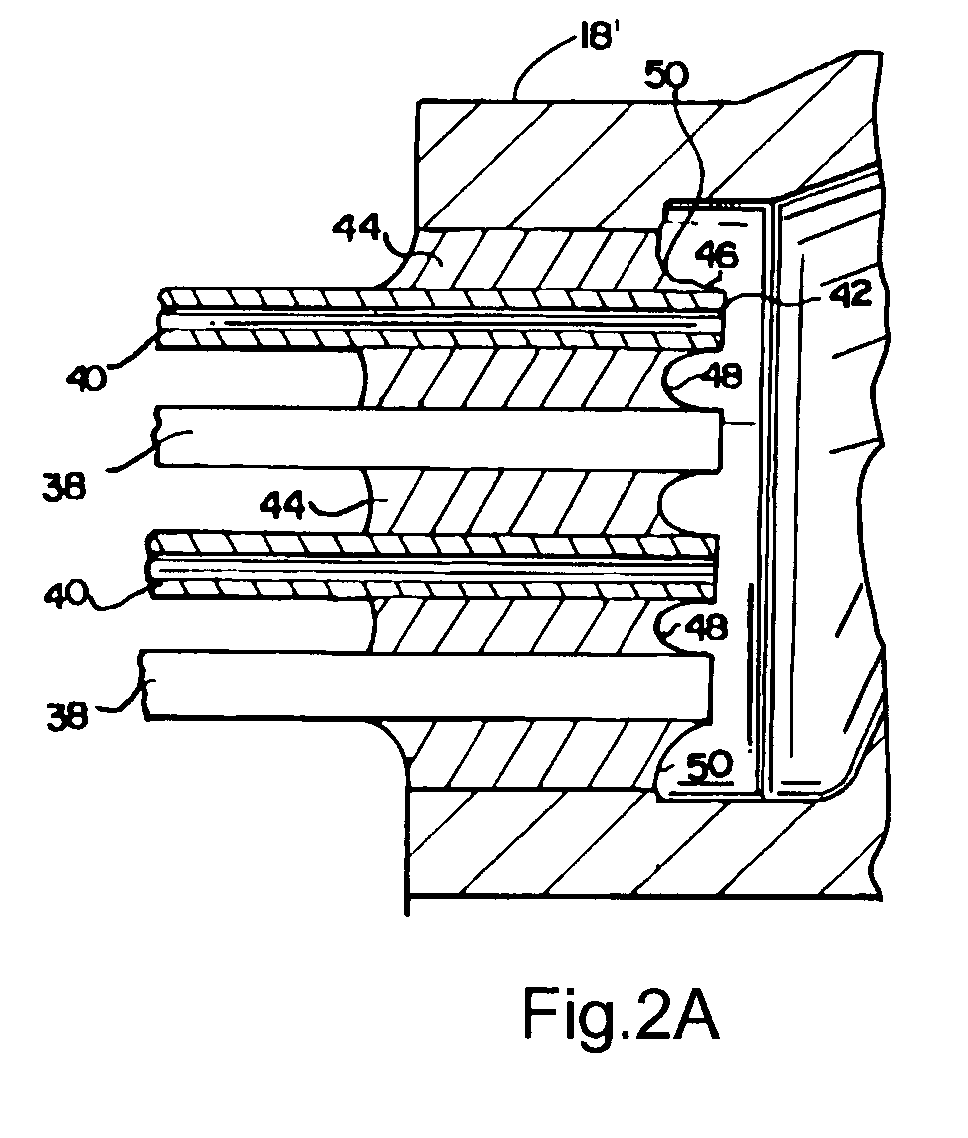Application of corrosion protective coating for extending the lifetime of water cooled stator bar clips
a technology of stator bars and corrosion protection coatings, applied in the direction of windings, dynamo-electric components, cooling/ventilation arrangements, etc., can solve the problems of affecting the reliability and efficiency of the generator over time, and affecting the reliability of the generator over time. , to achieve the effect of prolonging the projected lifetime of the stator bars and improving the reliability and efficiency of the generator
- Summary
- Abstract
- Description
- Claims
- Application Information
AI Technical Summary
Benefits of technology
Problems solved by technology
Method used
Image
Examples
Embodiment Construction
[0023] Referring now to the drawings, FIG. 1 illustrates a liquid-cooled stator winding arrangement used in a typical liquid-cooled generator. A stator core 10 having stator core flanges 12a and 12b and core ribs 14 are shown, with stator bars 16 passing radially through extending slots in the stator core 10 and terminating at opposite ends in inlet and outlet end fittings 18 and 20, respectively. A plurality of inlet coolant hoses 22 connect inlet end fitting 18 to an inlet coolant header 24. In like manner, outlet coolant hoses 26 connect outlet end fitting 20 to an outlet coolant header 28. End fittings 18 and 20 consist of an electrically conductive material such as copper.
[0024] As illustrated in FIG. 2, each water-cooled stator bar includes a plurality of both hollow and solid copper strands 30 and 32, respectively, disposed in side-by-side and superimposed relationship. The strands within the stator bar are brazed at joints 64, as well as brazed to the interior walls of the ...
PUM
| Property | Measurement | Unit |
|---|---|---|
| Thickness | aaaaa | aaaaa |
| Thickness | aaaaa | aaaaa |
Abstract
Description
Claims
Application Information
 Login to View More
Login to View More - R&D
- Intellectual Property
- Life Sciences
- Materials
- Tech Scout
- Unparalleled Data Quality
- Higher Quality Content
- 60% Fewer Hallucinations
Browse by: Latest US Patents, China's latest patents, Technical Efficacy Thesaurus, Application Domain, Technology Topic, Popular Technical Reports.
© 2025 PatSnap. All rights reserved.Legal|Privacy policy|Modern Slavery Act Transparency Statement|Sitemap|About US| Contact US: help@patsnap.com



